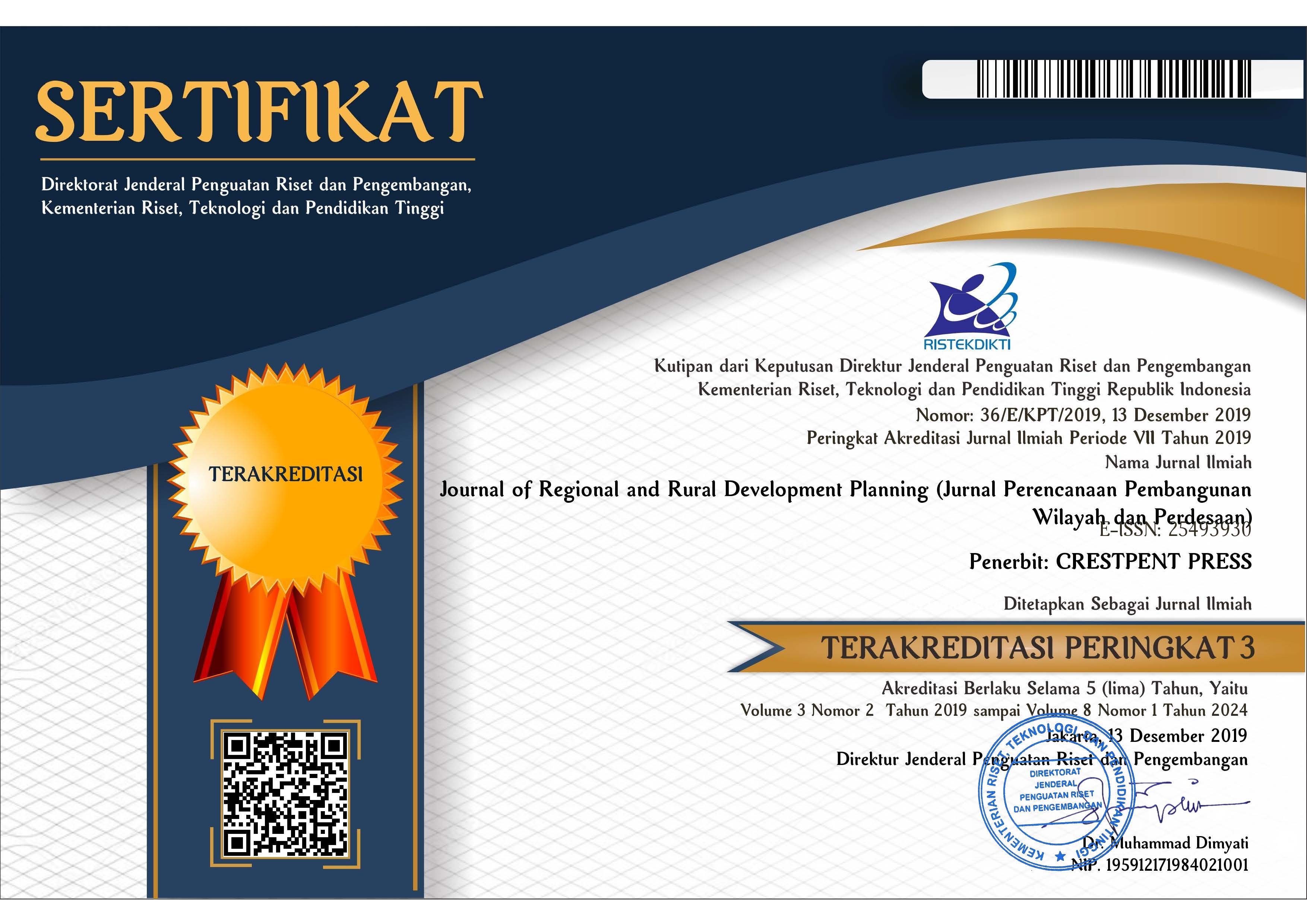Kecenderungan Konvergensi Ekonomi Antardaerah di Provinsi Sumatera Utara
Abstract
The province of North Sumatera, as one of advanced provinces in Sumatera Island, is expected to boost economies of other provinces. However, good economic level in North Sumatera Province has not been followed by equitable distribution of income between regions within. The value of Williamson Index shows the disparity that occurred in North Sumatera Province is still quite high. Nevertheless, someday relatively backward regions could catch up with relatively developed regions, so that inter-regional income levels may reach a relatively similar level, which is called economic convergence. This research aims to identify the tendency of economic convergence among regions in North Sumatera Province and to analyze the variables that influence the economic growth in order to realize economic convergence by using panel data regression approach. The result of the research shows the tendency of economic convergence in North Sumatera Province, while the variables that influence the economic convergence are capital expenditure, Human Development Index (HDI) and open unemployment rate.References
Adha, R., & Wahyunadi. (2015). Disparitas dan Konvergensi Pertumbuhan Ekonomi Antar Kabupaten dan Kota di Provinsi Nusa Tenggara Barat. Jurnal Sosial Ekonomi dan Humaniora, 1 (1), 13-23.
Badan Pusat Statistik. (2015). Produk Domestik Regional Bruto Provinsi-Provinsi di Indonesia Menurut Lapangan Usaha 2010-2014. Jakarta: Badan Pusat Statistik.
Baltagi, B. H. (2005). Econometrics Analysis of Panel Data (3rd ed). England: John Wiley & Sons.
Barro, R. J., & Xavier Sala-i-Martin (1992). Convergence. The Journal of Political Economy. 100. 223-251.
Gӧmleksiz, et al. (2017). Regional Economic Convergence in Turkey: Does the Government Really Matter for?. Economies, 27 (5), 1-16.
Gujarati, D. N. (2004). Basic Econometrics (4th ed). Singapura: McGraw Hill.
Iancu, A. (2007). Economic Convergence Applications. Romanian Journal of Economic Forecasting. 4, 24-48.
Jan, S. A., & Chaudhary A. R. (2011). Testing the Conditional Convergence Hypothesis for Pakistan. Pakistan Journal of Commerce and Social Sciences, 5 (1): 117-128.
Kharisma, B., & Saleh S. (2013). Convergence of Income among Provinces in Indonesia, 1984-2008: A Panel Data Approach. Journal of Indonesian Economy and Bussiness, 28 (2), 167-187.
Kurniawati, S., & Eddy Suratman. (2009). Konvergensi Pendapatan Per Kapita di Provinsi Kalimantan Barat dan Kalimantan Timur Tahun 2001-2007 serta Faktor-Faktor yang Mempengaruhi. Jurnal Ekonomi dan Pembangunan Indonesia, X (1), 53-67.
Malik, A. S. (2014). Analisis Konvergensi Antar Provinsi di Indonesia Setelah Pelaksanaan Otonomi Daerah Tahun 2001-2012. Jurnal Ekonomi dan Kebijakan, 7, 92-101.
Mankiw, N. G. (2012). Macroeconomics (8th ed). New York: Worth Publishers.
Firdaus, M. and Zulkornain Yusop. (2009). Dynamic Analysis of Regional Convergence in Indonesia. International Journal of Economic and Management, 3 (1), 73-86.
Melliana, A., & Zain, I. (2013). Analisis Statistika Faktor yang Mempengaruhi Indeks Pembangunan Manusia di Kabupaten/Kota Provinsi Jawa Timur dengan Menggunakan Regresi Panel. Jurnal Sains dan Seni Pomits, 2 (2), D237–D242.
Nurhamidah, R. & Atik Mar’atis S. (2014). Determinan Konvergensi Pendapatan di Provinsi Sumatera Selatan. Jurnal Ekonomi dan Pembangunan Indonesia, 15 (1), 71-90.
Paramita, A. A. I. D., & Ida Bagus P. P. (2015). Pengaruh Investasi dan Pengangguran terhadap Pertumbuhan Ekonomi serta Kemiskinan di Provinsi Bali. E-journal EP Unud 4, 1194-1218.
Pebriani, K. A., & I Wayan Sukadana. (2010). Konvergensi Pendaoatan Per Kapita Studi Kasus Antarkabupaten di Indonesia pada Era Otonomi Daerah. E-journal EP Unud 2, 152-163.
Royuela, V., & Gustavo A. G. (2010). Economic and Social Convergence in Colombia. ISAE Working Paper No. 14.
Setiyawati, A., & Ardi Hamzah. (2007). Analisis Pengaruh PAD, DAU, DAK, dan Belanja Pembangunan terhadap Pertumbuhan Ekonomi, Kemiskinan, dan Pengangguran: Pendekatan Analisis Jalur. Jurnal Akuntansi dan Keuangan Indonesia, 4 (2), 211-228.
Shuai, C., Shen, L., Jiao, L., Wu, Y., & Tan, Y. (2017). Identifying Key Impact Factors on Carbon Emission: Evidences from Panel and Time-Series Data of 125 Countries from 1990 to 2011. AppliedEnergy, 187 (2017), 310-325.
Siddiqui, Z., & Rummana Z. (2017). Regional Integration and Economic Growth: A Convergence Analysis for Pakistan. Journal of Global Economics, 5, (3), 1-3.
Spangenberg, J.H. (2015). The Corporate Human Development Index CHDI: A Tool For Corporate Social Sustainability Management and Reporting. Journal of Cleaner Production. Xxx (2015), 1-11.
Su, L., Zhang, Y., & Wei, J. (2016). A Practical Test for Strict Exogeneity in Linear Panel Data Models with Fixed Effects. Economics Letter,.147 (2016), 27-31.
Yuliana. (2014). Pengaruh Pendapatan Asli Daerah dan Belanja Modal terhadap Pertumbuhan Ekonomi (Studi pada Kabupaten/Kota di Pulau Sumatera). Jurnal Akuntansi dan Keuangan, 5 (1), 33-48.
Copyright (c) 2018 Journal of Regional and Rural Development Planning

This work is licensed under a Creative Commons Attribution-ShareAlike 4.0 International License.




.png)














